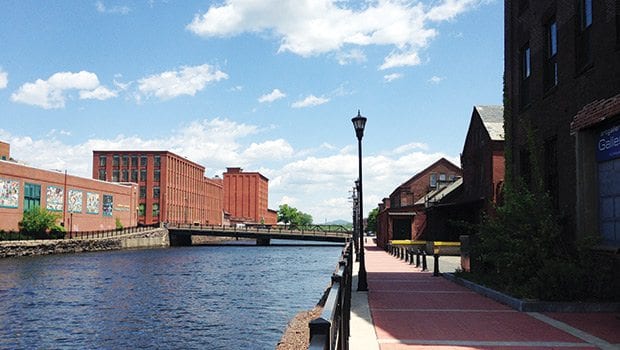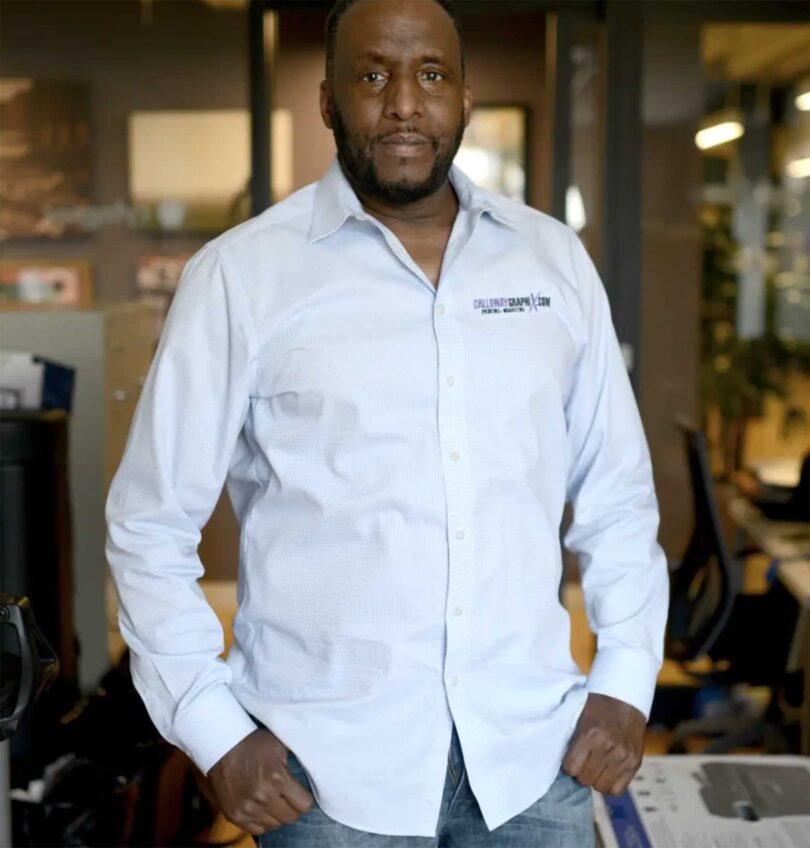The Holyoke Innovation District finds creative solutions to revitalizing the city

While Boston’s Seaport Innovation District has garnered praise and attention, the efforts in Holyoke to revitalize vacant mill and factory sections of the city with new businesses and spur economic growth has been steadily and successfully moving forward for more than half a decade.
Though the innovation efforts in Boston have certainly spurned tremendous investment, jobs and expansion of the economic hub of the city, few would argue that the city’s economy would have collapsed without them. But in Holyoke it is a different story — the once booming Paper City is fighting for its life, with the Holyoke Innovation District at the heart of this battle.
“We have been impressed by the work the work that is going on in Holyoke,” said Pat Larkin, director of the Innovation Institute at the Massachusetts Technology Collaborative. “It has been a model effort. As a matter of fact, on a state-wide basis, there are other regions that are looking at it and trying to replicate it.”
The efforts in Holyoke began in 2009 when a task force took a look at what would be needed to establish an innovation district in the city. Two years later, the task force established a strategic plan to get it done. At the same time, Holyoke was developing a big picture, 20-year plan to revitalize and redevelop its city center with the innovation district a crucial component.
Holyoke also got a fortuitous marque project to jump start the innovation district with the $95 million Massachusetts Green High Performance Computing Center. The Center, which was completed in November 2012, is a 90,000-square-foot, 15-megawatt facility located on a former industrial site just a few blocks from City Hall in Holyoke that runs millions of virtual experiments per month on its computers, supporting the work of researchers all over the world.
The Center is a joint venture between Boston University, Harvard University, the Massachusetts Institute of Technology, Northeastern University and the University of Massachusetts.
In addition to the economic boost brought by the operation of a cutting-edge computing facility in Holyoke, the project spent money on environmental remediation, construction of a fiber optic communication link between surrounding cities, an upgrade to the area power distribution infrastructure and new water and sewer lines.
“The attraction of the computing center to Holyoke really started our planning process around the Holyoke Innovation District. Really, we say it spawned out from the computing center,” said Marcos Marrero, Holyoke Director for Planning and Economic Development and co-chair of the Holyoke Innovation District.
Marrero believes technology drives innovation and innovation drives today’s economy, but those heading up Holyoke’s economic revitalization are not naïve enough to think that one computing center — as world class as it is — is going to turn the Pioneer Valley into Silicon Valley or that most tech companies would choose the city over Boston-area locations.
Instead, the Holyoke Innovation District has turned to other sectors, such as the creative economy, green energy and food services, to provide the business to expand on the economic influx from computing center.
Education, cultural institutions, a canal walk, new housing and even a new railway stop are also part of the future of the city’s innovation district.
The strategy was to take a look around at the kind of businesses and startup activity the city had already and potential areas to grow.
Space to fill
What the Holyoke Innovation District can offer is space and lots of it. The city has more than 1 million square feet of vacant mill and factory space, much of it along the canals that, along with the Holyoke Dam on the Connecticut River, were once the heart and soul of the city’s former paper-mill driven industry.

Author: Samalid HoganKickoff class for first cohort of SPARK, a nine-week business development course for entrepreneurs, held at the Massachusetts Green High Performance Computing Center.
In 2012, work began to clean up the canals, build a walkway along the canals connecting potential business sites, and start to bring in new tenants.
The mix of existing businesses in what has become the innovation district, including PorterHouse Media, Paper City Brewery, Paper City Studios and Fln-Mar Manufacturing, is being augmented by new businesses Gateway City Arts, Simple Diaper and Linen, The Brick Coworkshop and VeritechIT.
Small business incubators such as Baustein Building and Gateway City Arts provide low cost office space or co-working space for artists and those working in the creative industries.
Holyoke Community College is spending $5 million to build a new, 20,000-square-foot culinary and hospitality learning center in the Innovation District, as well.
A $19 million renovation of the buildings that will become the Chestnut Park Apartments broke ground in 2014, the first new housing project in the area for decades.
Recently, two local businessmen bought the former Cubit Wire & Cable Co. and announced plans to invest millions to turn it into an open-air market on the first floor and build living and working lofts on the top three floors.
“We are starting to see a transformational effect of the changes we are making,” Marrero said.
“There are not just dead streets and not dead buildings any more. People are starting to occupy these spaces,” he added. “Something is moving in the right direction.”
Supporting other projects
The Holyoke Innovation District is guided by a “kitchen cabinet” of leaders, including Marrero and fellow Innovation District co-chair Tim Brennan. MassTech’s Larkin is on the cabinet, as is Holyoke Mayor Alex Morse and the state’s Assistant Secretary for Technology, Innovation and Entrepreneurship, Katie Stebbins.
With an eye to the future, the brain trust behind the Holyoke Innovation District is also backing programs, such as Girls Inc. of Holyoke, a nonprofit organization located in the innovation district that provides young women with tech-based education programs.
Samalid Hogan, Holyoke Innovation District project manager, says the efforts made by Girls Inc. are key to the innovation economy the city seeks.
“We need to build the next generation of innovation,” Hogan said. “We hope that, in doing so, our next generation of leaders will be much better prepared.”
She points to the innovation district’s SPARK Launch Program, a nine-week business development course, as an example of supporting local entrepreneurs — just the kind of businessmen and businesswomen that the Holyoke Innovation District needs to secure its future.
Continuing to attract investors to the Innovation District is also going to be critical, Marrero points out, as is a focus on local employment with the jobs that are generated.
“We must really get the economy going for the local population,” he added.
The Holyoke Innovation District is going to need the business world to pay attention in order to succeed, but the city has partnerships and backing with state agencies and organizations including UMass, the Greater Holyoke Chamber of Commerce, the Pioneer Valley Planning Commission and the Economic Development Council of Western Massachusetts.
In 2014, a $3.5 million public investment was made in the canal walk, a $6 million bond was issued for parking deck construction and another $650,000 was put into brownfield assessment and cleanup. Grants have been used to fund projects in clean energy and computing, while the Federal Reserve Bank of Boston pledged $250,000 to fund the SPARK program.
MassTech, which has provided funding for some of the Holyoke Innovation District’s efforts already — and $25 million for the Massachusetts Green High Performance Computing Center — is keeping a close eye on how things develop looking to provide backing when it can.
MassTech’s Larkin believes Holyoke will lead an economic revival of the entire region in Western Massachusetts.
“It is a very unique community and the Pioneer Valley is a very unique region. We are kind of bullish about the region. We are seeing a real insurgence of energy and excitement in these city centers,” Larkin said. “We think the hard work and engagement and empowerment of the local communities is going to be crucial to the development of an innovation economy in the region.”






